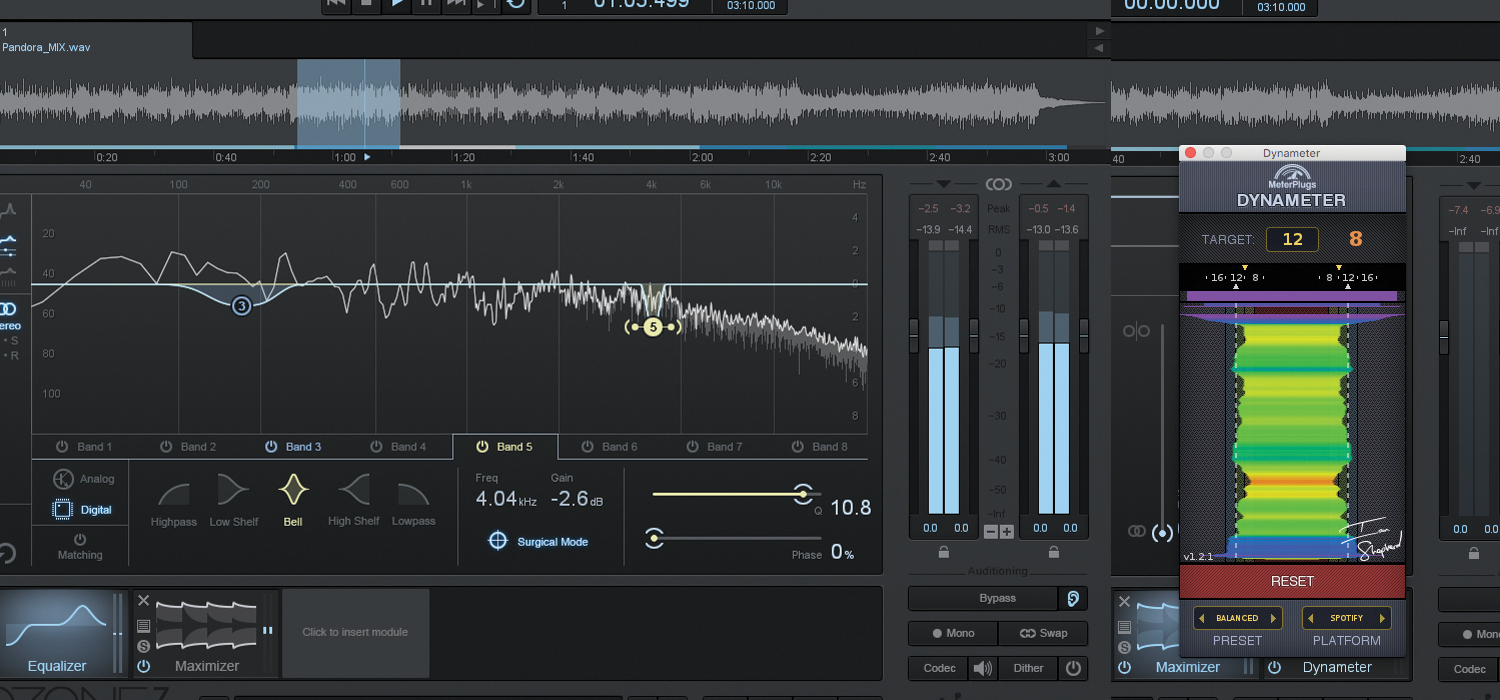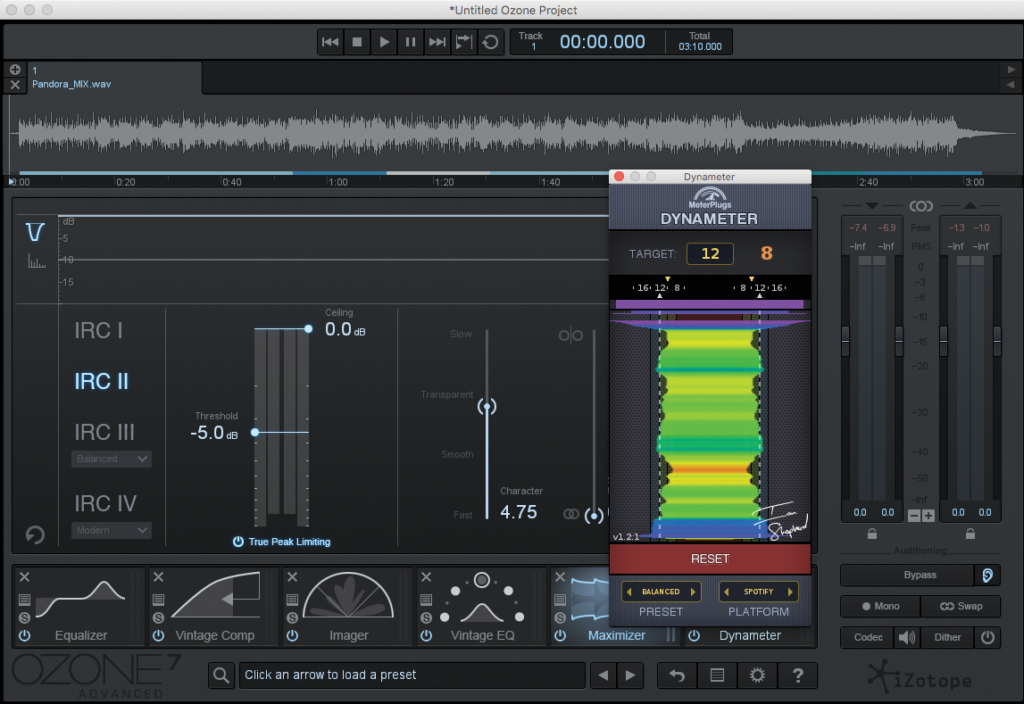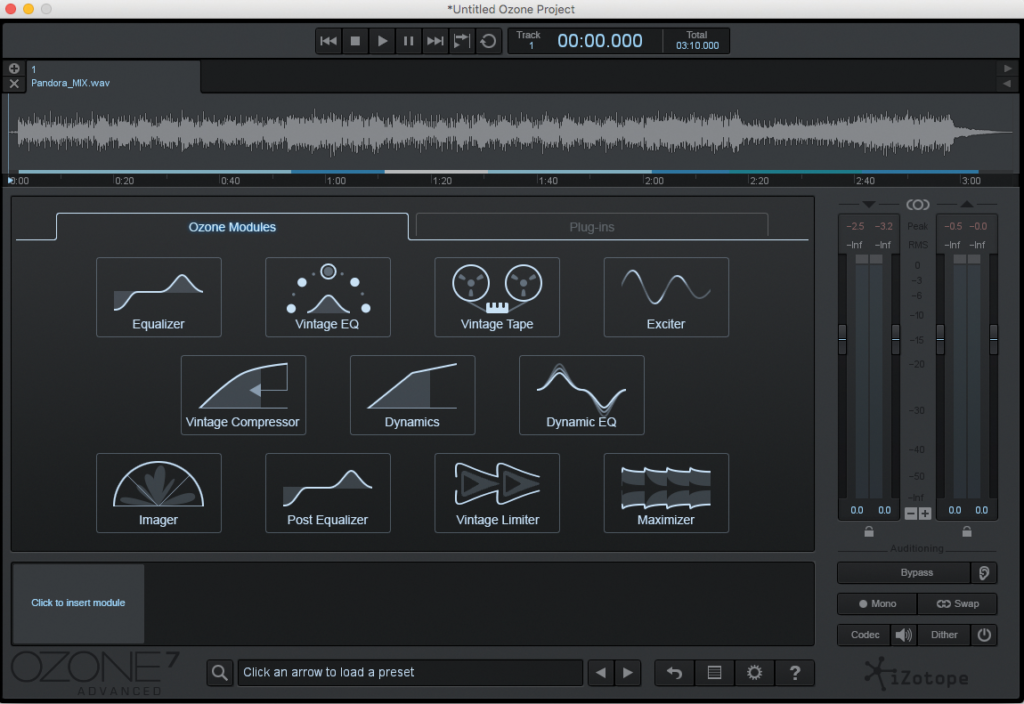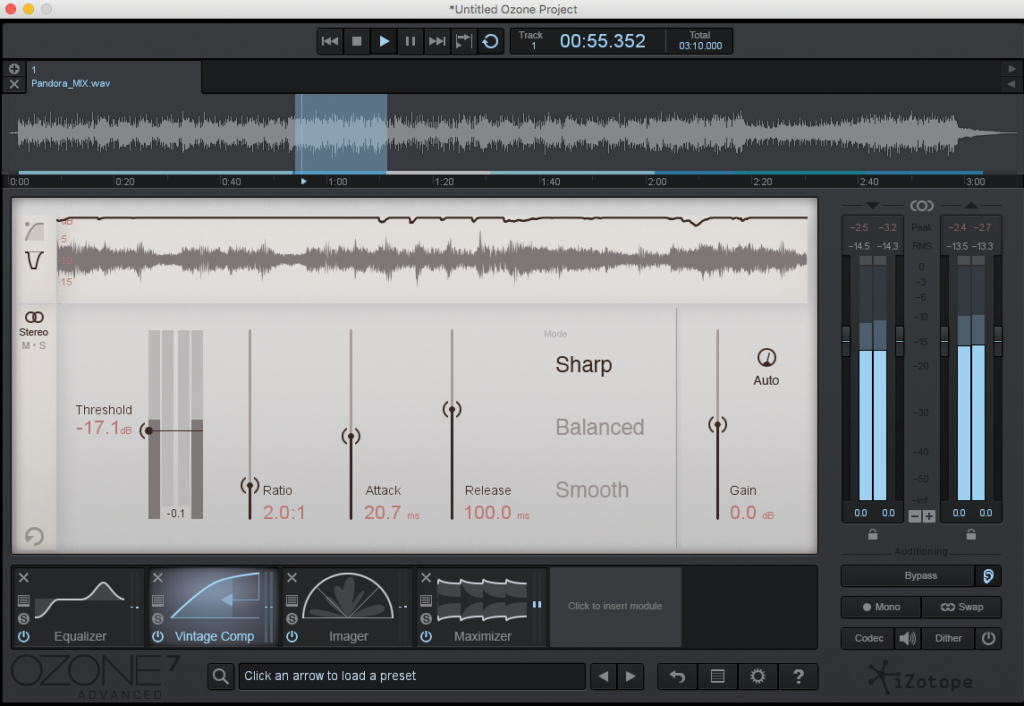Mastering Tutorial: Mastering With iZotope Ozone 7
In this second in-the-box mastering tutorial we look at using iZotope’s versatile and in-depth program Ozone 7 to master your mixes more effectively… (Click images for larger detailed versions) Mastering With iZotope Ozone 7 1: Add the track or tracks you want to work on to the Ozone 7 project, and initialise the project by […]

In this second in-the-box mastering tutorial we look at using iZotope’s versatile and in-depth program Ozone 7 to master your mixes more effectively…
(Click images for larger detailed versions)
Mastering With iZotope Ozone 7
1: Add the track or tracks you want to work on to the Ozone 7 project, and initialise the project by removing or bypassing all of the active modules. Listen to the material closely, paying attention to the stereo spread, frequency balance and dynamic response. Make notes.
2: Don’t add loads and loads of modules The fewer you add, the less likely you are to over-process. Start with a simple Maximizer module, with True Peak mode engaged. The Limiter shouldn’t be doing anything initially: if it is, turn the input gain down to give yourself headroom.
3: Add an EQ module and drag it into the first position in the chain. Use this to notch out any problem frequencies. The digital mode in this EQ is capable of some very precise EQ notching – very useful for targeting resonances without effecting the rest of the signal.
4: Add any additional processing as you feel that is necessary, whether that’s compression, further EQ tweaks, stereo imaging or excitement. Drag each module into position in the chain before the final Maximizer module.
5: You can add third-party VST or AU plug-ins, too, which can be useful for adding additional metering, such as a loudness meters, de-noising tools or a favourite audio processor.
6: Set level with the Maximizer Threshold: add 1dB headroom with the Output Ceiling. You can even hear the difference this makes to future mp3 encoding via the built-in Codec monitoring. As this is a True Peak limiter, you’ll probably be able to get away with a slightly higher ceiling.






